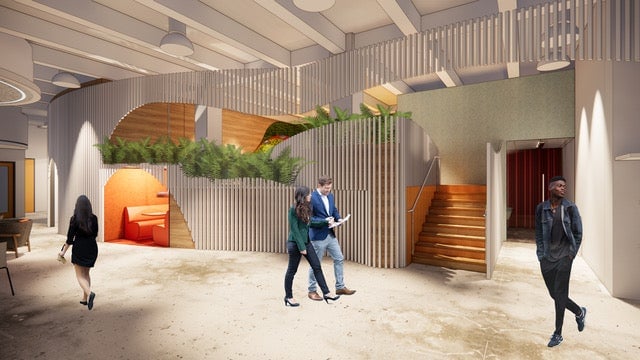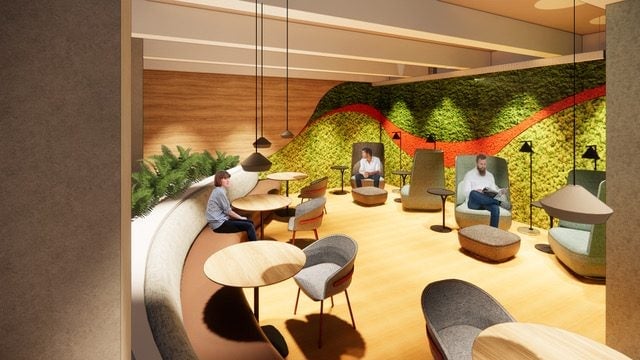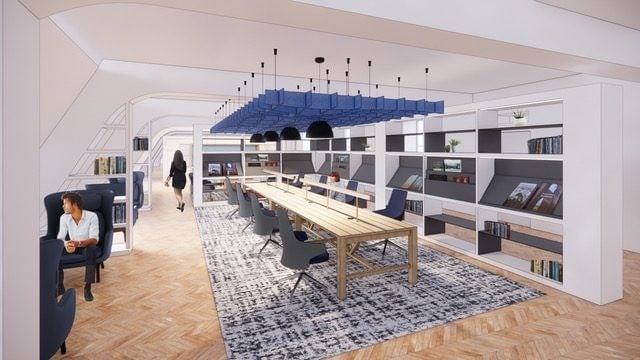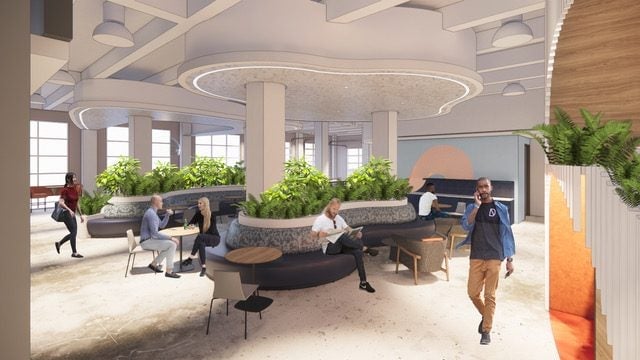How Cloudflare is reengineering its offices for a post-Covid world
As the world begins to navigate return-to-work options in the wake of Covid-19, most employers are leaning into a hybrid work format, with fewer than one in five executives saying they want to return to the office as it was pre-pandemic. Never before in modern history has there been a greater opportunity to retool and reinvent our physical places of work.


As the world begins to navigate return-to-work options in the wake of Covid-19, most employers are leaning into a hybrid work format, with fewer than one in five executives saying they want to return to the office as it was pre-pandemic. Never before in modern history has there been a greater opportunity to retool and reinvent our physical places of work.
Cloudflare, which employs more than 1,900 people across 16 global offices, had always been an office-first company. And it’s been our priority since early in the pandemic to get our people back in the office as quickly and as safely as possible, should they need it. But we understand that Covid-19 has fundamentally—and forever—changed not only the way we work, but the way we use an office.
While offices in pre-pandemic days were thought of primarily as a place to get work done, the office in a hybrid world takes on a number of different functions to serve a variety of needs: a space for creativity, socializing, coaching and collaboration, and in some cases, a regular retreat away from home distractions.
This is why, as we prepare to reopen our doors this autumn, we’re reimagining our offices, starting first with experiments in San Francisco and London, to better accommodate employees for this new world of work. While the design is still in development, and the theories behind it have yet to be proved out in practice, there are some core elements we are considering as we continue to iterate. We’re partnering with an external firm to design for the future, creating intentional spaces (see renderings of our London and San Francisco offices throughout this article) that meet three key objectives: collaboration, ideation, and mentorship.
Redesigning the office for collaboration, whether with in-person or remote colleagues

One of the most obvious changes employees will notice when they walk through our doors is the elimination of rows of assigned desks, and the introduction of flexible seating zones. These new spaces will be purposefully designed for team sprints and focused workshops, so that teams can come together for a day, a week, or longer to claim the space and collaborate for the duration of a project. These flexible spaces will be able to grow or shrink to fit the team’s needs, and will offer several types of work zones to serve different purposes, from collaboration to focused solo work.
While the long-term vision is to introduce technology that intelligently co-locates employees based on their schedules that day, in the near-term we’re experimenting with tools that will guide employees to the best work zone based on their immediate needs, and help them locate other team members. For example, if your intention in going to the office is to collaborate with a team on a specific project and participate in related meetings, you will be assigned to that team’s specified seating zone.
With the introduction of flex seating, we anticipate questions around where employees should stash their stuff. To accommodate personal items in this new arrangement, our new space will feature a hospitality-like setting where people can leave personal items in lockers for the day, and check out items—like laptops or other office equipment—as needed.
While we’re excited about creating opportunities for in-person collaboration, it’s also important to acknowledge that in-person experiences can highlight disparities for the segment of employees who choose to work remotely. The last year of remote work taught us that full team participation in video conferencing really leveled the playing field and made participation easier in meetings. This is one of the important perks of the pandemic that we’re not willing to give up, and why we feel strongly that if one person is remote for a meeting, then everyone joins remotely.
One of the fundamental new features of our new offices will be a video conferencing village, made up of individual phone booths meant for single users. In fact, these are the only spaces that will be equipped with videoconferencing functionality. This way, our people working in the office can join as solo, “remote” participants when needed, so other remote participants feel like they have an equal seat at the (virtual) table.
Reimagining the office to inspire ideation

In a hybrid world, the office should suit a variety of needs. While many employees may choose to come into the office just for those moments of in-person connection, others may see it as a place for focused work time and an escape from at-home distractions. (As a working mother, this is something I’m intimately familiar with after more than a year of sheltering in place with my three daughters home from school.) So while we’re outfitting the office in ways intended to promote collaboration, we’ll also be creating spaces for quiet, focused work, where ideas can freely flow with few distractions. A new section of our offices, reminiscent of a university library, will serve as a quiet work and study area where people can focus, think, and get work done.
We’re also creating spaces meant to inspire ideation and creativity. Studies show that natural light and time spent outdoors boosts cognitive performance, not to mention mood and imagination. While our outdoor decks were previously best suited for breaks and water cooler conversation, occasional quick meetings, or brief spurts of work on a laptop, we’re revamping the entire area to enable sustained outdoor working. Our team is currently conducting wind and light studies of our roof deck to ensure optimal working conditions.
In addition to intentional spaces, we want to ensure we’re equipping people with the tools and resources they need for a productive and inspiring workday. Digital whiteboard technology will be available throughout the office, with analog tools that can be easily moved from zone to zone as people move about throughout the day. We’re also bringing Cloudflare TV, our 24-7 live broadcast channel that we introduced early in the pandemic, to the office, with a dedicated studio for recording and sharing content. Anyone from within the company can contribute programming on any topic of their choice—from lessons learned, to career pivots, to deep dives on web infrastructure—with the goal of sharing insights and inspiring new ideas with their colleagues around the world.
Building out space for coaching and mentorship

While there’s no evidence that suggests mentoring via video conferencing yields lesser outcomes than in-person mentoring, we understand that there’s nothing quite like face time when it comes to building trusted relationships. Video conferencing is undoubtedly here to stay, but many employees have told us they place greater value in in-person time with coaches, even if just for the occasional break from virtual engagements.
Our reimagined space will provide plenty of opportunities for coaching and connection. One of the big ways we’re thinking about this has to do with, of all things, lunch. Most mentoring sessions—whether intentional or not—happen over meals. For this reason, we will encourage our team members to step away from work, get out for one-on-one or team lunches, and reclaim some long overdue in-person outings, while supporting local businesses. Inside the office, we’re adding more open seating and other casual lounge areas where people can bring back food and beverages, and connect over a meal.
There’s no black and white in a hybrid world
Just as office culture has always been in our DNA, so too has experimentation. Our reimagined offices are our latest and greatest beta test of sorts, and one that we acknowledge is not a tried-and-true playbook but rather a work in progress. Flexible workforces demand flexible spaces, but also flexible attitudes, so we’re approaching this new endeavor with an open mind and a willingness to adjust to meet the needs of our (soon-to-be) hybrid team.